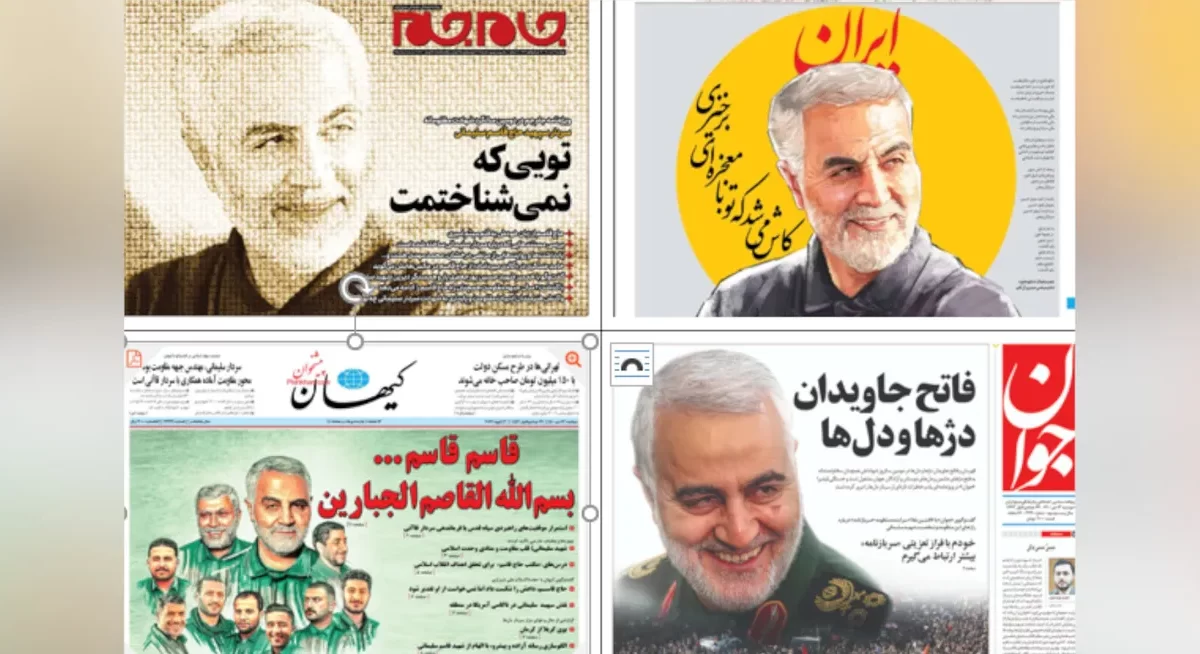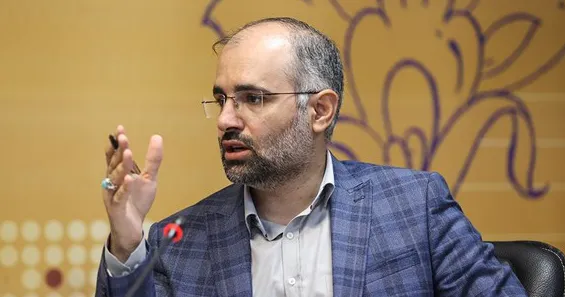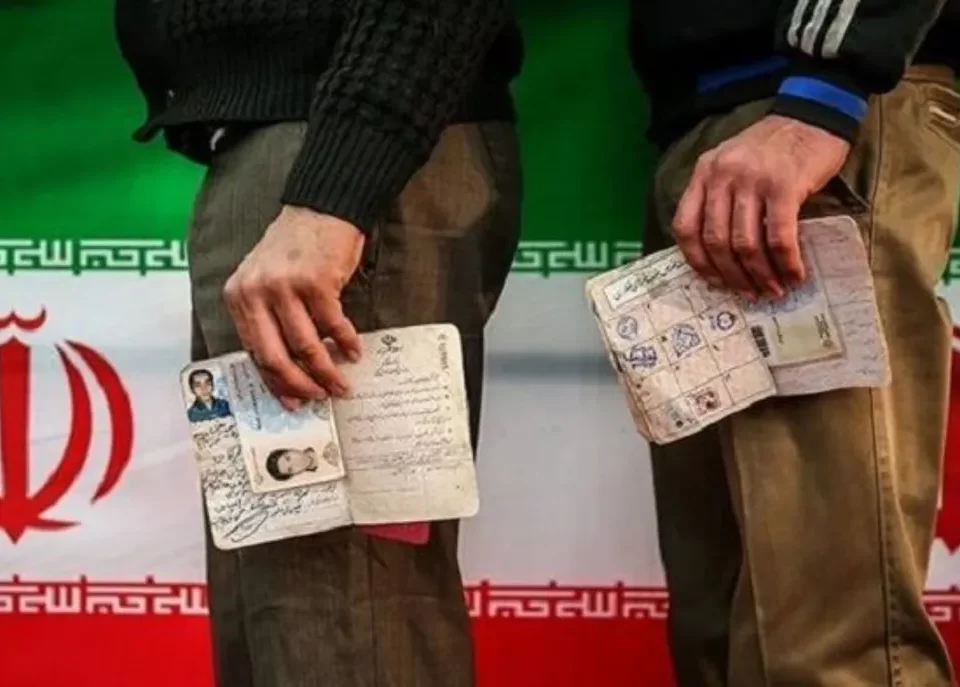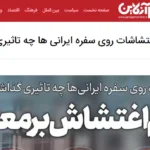
Media Review: Jamejam and Information Manipulation with Invalid Data
May 7, 2023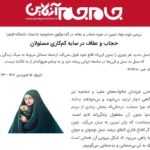
Media Review: Jomjom and the Imposition of Monotony with Fake Information and Stereotypes
May 7, 2023On the front pages of most newspapers in Iran on January 3, 2022, Qasem Soleimani’s photo was featured. Where do the media get their money from and how? This question arises when we do not see any traces of advertisements in the colorful pages of newspapers and magazines or find significant advertisements. If we have a minimum media literacy, we know that advertisements are the most important source of income for most media outlets. Media outlets are generally categorized based on their sources of income into three categories:
- Money-making media that generate income directly from sales.
- Advertisement-oriented media that generate income from ad placements.
- Combined media (money-making and advertisement-oriented) that have both direct sales and income from advertisements.
Knowing where and how the media make money helps us understand how their news values are defined, what direction their content is oriented towards, and where they are heading.
Take a look at the front page of these five widely circulated newspapers in Iran published on January 3, 2022:
“Media Review: Qasem Soleimani Headlines Newspapers; Money or Power?”
There is a rule in the media, and that is when evaluating the reasons behind the increase or decrease in a newspaper’s circulation on a particular day, they look at the headlines on the front page to have a better understanding of the audience’s taste. This is because the attractiveness of the front page and the selected headlines have an impact on the increase or decrease in the sales of a newspaper or magazine. Now, when a newspaper closes its front page in such a way, it means that it has not counted its sales for that day based solely on the headline, but it has made such a decision based on other policies.
The most optimistic assumption is that the Qasem Soleimani Commemoration Headquarters, which paid a considerable amount of money, purchased the front page of these newspapers. In this case, these media outlets have resorted to advertorials to finance themselves.
In tough economic conditions where the private sector does not have much money to spend on advertisements, or in situations where newspapers cannot compete with social networks and visual media in attracting advertisements, accepting such advertisements may be questionable, but that is not the whole truth. Traditional media outlets in Iran are under the control of the government and, except within the framework defined by intelligence and security agencies, they do not have access to events.
The lack of a single line of content criticizing General Soleimani or criticizing the regional policies of the Islamic Republic or even providing scientific and independent analysis of the costs of Iran’s regional presence and its long-term effects on national interests is evidence that conventional media in Iran have become advertising agencies for the government. The gatekeeping function of news in these media outlets operates not only as a controller of news values and news selection based on importance, prevalence, accuracy, and precision but also as a filtering mechanism.
Non-responsive and undemocratic powers usually force sub-media outlets into censorship through the following methods:
- Imposing censorship through the enforcement of restrictive laws.
- Imposing censorship under the guise of combating hate speech, national security violations, and incitement to violence.
- Imposing censorship by compelling media outlets to publish fake news and propaganda.
- Imposing censorship through threats and coercion of journalists and media managers.
- Imposing censorship by blocking their financial resources.
The review of Iranian newspapers and media on the day of 13 Dey 1400 (January 3, 2022) reveals the reality that the government, through controlling the media, attempts to guide public opinion and shape social realities as it desires. On the other hand, it easily transforms the media into government propaganda tools and turns newspapers into advertising brochures.
The output of domestic media on 13 Dey (January 3) is evidence of the government’s complete control over the media. The government, with its money and coercive power, has turned the media into a tool for promoting its ideology and securing its interests, not allowing any report contrary to the government’s taste to be published.
Money and force can control conventional media and sacrifice “freedom of expression” for short-term interests. However, the reality is that the development of media and public access to them make it impossible for governments to control the media, and these efforts will only lead to a reduction in the legitimacy and political credibility of the rulers.
مرور رسانهها؛ قاسم سلیمانی تیتر یک روزنامهها؛ پول یا زور؟
رسانهها از کجا و چهگونه پول در میآورند؟
این سوال وقتی بیشتر ذهن ما را قلقلک میدهد که در لابهلای صفحات تمام رنگی روزنامهها و مجلات، ردی از آگهی نمیبینیم یا درمییابیم آگهی قابل توجهی ندارند. اگر حداقل سواد رسانهای داشته باشیم، میدانیم که آگهی مهمترین منبع درآمدی بیشتر رسانهها به شمار میآید. اساسا در تقسیمبندی رسانهها از منظر منبع درآمدی، آنها را به سه دسته تقسیم میکنند:
- رسانههای پولساز که مستقیم از محل فروش، کسب درآمد میکنند.
- رسانههای آگهیمحور که از محل جذب آگهی درآمد دارند.
- رسانههای ترکیبی (پولساز و آگهیمحور) که هم فروش مستقیم دارند و هم از آگهی درآمد کسب میکنند.
این که بدانیم رسانهها از کجا و چهگونه پول در میآورند، به ما کمک میکند تا بدانیم ارزشهای خبری برای آنها چهگونه تعریف میشوند، سمت و سوی محتوای تولیدی آنها چیست و در چه جهتی حرکت میکنند.
***
به صفحه اول این پنج روزنامه کثیرالانتشار در ایران که روز ۱۳ دی ۱۴۰۰ منتشر شده است، توجه کنید:
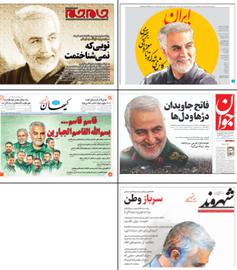
یک قاعده در مطبوعات وجود دارد و آن این که در ارزیابی دلایل بالا رفتن برگشتی یک روزنامه در یک روز خاص، به تیترهای صفحه اول آن روز نگاه میکنند تا درک بهتری از ذائقه مخاطب داشته باشند. چرا که جذابیت صفحه اول و تیترهای انتخابی در کم و زیاد شدن فروش یک روزنامه یا مجله تاثیر دارد. حال وقتی روزنامهای صفحه اول خود را این گونه میبندد، یعنی روی فروش آن روز روزنامه خود حسابی باز نکرده بلکه براساس سیاستهای دیگری چنین تصمیمی اتخاذ کرده است.
خوشبینانه ترین حالت این است که فکر کنیم ستاد بزرگداشت سردار «قاسم سلیمانی»، فرمانده کشته شده نیروی «قدس»، شاخه برونمرزی سپاه پاسداران انقلاب اسلامی با پرداخت پولی قابل توجه، صفحه اول این روزنامهها را خریده است. در این حالت میتوان گفت این رسانهها برای تامین منابع مالی خود، به رپورتاژ آگهی روی آوردهاند.
در شرایط بد اقتصادی که بخش خصوصی چندان پولی برای هزینه کردن در بخش آگهیها ندارد یا در شرایطی که روزنامهها قادر به رقابت با شبکههای اجتماعی و رسانههای تصویری در جذب آگهی نیستند، قبول چنین آگهیهایی شاید قابل اغماض باشد اما این همه واقعیت نیست. مطبوعات و رسانههای مرسوم در ایران در کنترل حاکمیت هستند و جز در چارچوب ترسیمی توسط دستگاههای اطلاعاتی و امنیتی، ورودی به رویدادها ندارند.
فقدان یک خط محتوا در نقد سردار سلیمانی و یا نقد سیاستهای منطقهای جمهوری اسلامی و یا حتی تجزیه و تحلیل علمی و مستقل هزینههای حضور منطقهای ایران و اثرات بلندمدت آن بر منافع ملی ایران، موید این واقعیت است که رسانههای مرسوم در ایران به دستگاه تبلیغاتی حکومت تبدیل شدهاند. دروازهبانی خبر در این رسانهها بیش از آن که کنترل کننده ارزشهای خبری و انتخاب اخبار بر اساس درجه اهمیت، فراگیری، صحت و دقت آنها باشد، در نقش فیلترینگ عمل میکند.
قدرتهای غیرپاسخگو و غیردموکراتیک معمولا به روشهای زیر رسانهها را به سانسور وادار میکنند:
- اعمال سانسور از طریق اجرای قوانین محدود کننده
- اعمال سانسور با نقاب مبارزه با سخنان نفرتپراکن و نقض کننده امنیت ملی و خشونت آفرین
- اعمال سانسور با الزام رسانهها به انتشار اخبار جعلی و پروپاگاندا
- اعمال سانسور از طریق تهدید و تطمیع روزنامهنگاران و مدیران رسانهها
- اعمال سانسور از طریق مسدود کردن منابع مالی آنها
مرور روزنامهها و رسانههای داخل ایران در روز ۱۳ دی ۱۴۰۰ این واقعیت را عریان میسازد که حکومت با کنترل رسانهها، چهگونه میکوشد افکار عمومی را هدایت کند و واقعیتهای اجتماعی را آنگونه که دوست دارد، رقم زند. از سوی دیگر، رسانهها را چهگونه به سادگی به بنگاه تبلیغاتی حکومت تبدیل و روزنامهها را به بروشورهای تبلیغاتی تبدیل میکند.
خروجی رسانههای داخلی در روز ۱۳ دی، سندی است بر کنترل کامل حکومت بر رسانهها؛ حکومتی که با پول و قوه قهریه خود رسانهها را به ابزاری برای تبلیغ ایدئولوژی و تامین منافع خود تبدیل کرده است و اجازه نمیدهد هیچ گزارشی خلاف سلیقه حکومت منتشر شود.
با پول و زور میتوان رسانههای مرسوم را کنترل و «آزادی بیان» را قربانی منافع زودگذر کرد ولی واقعیت این است که توسعه رسانهها و دسترسی عموم مردم به آنها، کنترل رسانهها را برای حکومتها غیرممکن ساخته است و این تلاشها جز به کاهش مشروعیت و اعتبار سیاسی حاکمان منجر نخواهند شد.

